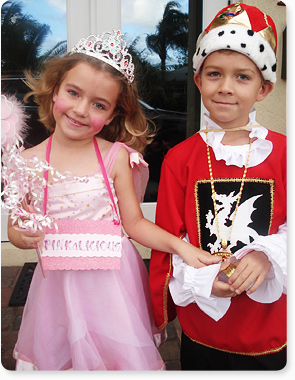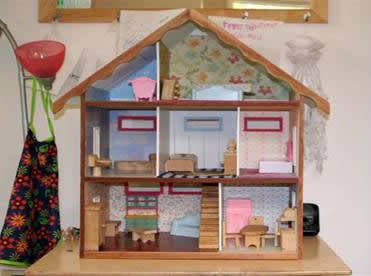About Play Therapy
Stuart Brown, MD, Author of Play: How it shapes the Brain, Opens the Imagination, and Invigorates the Soul.
Why Play Therapy?
Dr. Courtney is credentialed as a Registered Play Therapy Supervisor through the Association for Play Therapy. The underlying philosophy of Play Therapy is that clinicians work with children at their developmental level of communication and comfort—the level of play. Children naturally turn to play when they are sad, worried, angry, or confused. They “play-out” their feelings similar to the way an adult will “talk” out their feelings. As children begin to reveal their problems through play, the Play Therapist is then able to address the problems by offering solutions and by teaching children new ways of coping thus increasing skill development.
 Play Therapists are trained to therapeutically intervene with children at the symbolic level of play. Interventions target the child’s interest level as well as developmental level. For example, in my office I have a variety of art materials (paints, clay, markers, crayons, etc.) and toys (puppets, doll house, cars, dolls, games, etc.) available so that a child has options to choose their own activity of comfort. I also subscribe to a philosophy of ecopsychology and therefore also engage children through the use of earth science which is bountiful in metaphor suitable for children and the healing process. Ecopsychology, simply stated, values the healing qualities of our outdoor nature environment and our contact and relationship to it. I try to bring the outdoors indoors by having nature healing objects such as sand and various mineral stones in my office.
Play Therapists are trained to therapeutically intervene with children at the symbolic level of play. Interventions target the child’s interest level as well as developmental level. For example, in my office I have a variety of art materials (paints, clay, markers, crayons, etc.) and toys (puppets, doll house, cars, dolls, games, etc.) available so that a child has options to choose their own activity of comfort. I also subscribe to a philosophy of ecopsychology and therefore also engage children through the use of earth science which is bountiful in metaphor suitable for children and the healing process. Ecopsychology, simply stated, values the healing qualities of our outdoor nature environment and our contact and relationship to it. I try to bring the outdoors indoors by having nature healing objects such as sand and various mineral stones in my office.
(Please visit the Association for Play therapy website at www.a4pt.org for more information about Play therapy and credentialing requirements.)
THE PERFECT DOLL HOUSE
An excerpt of Dr. Courtney’s publication in the
Play Therapy magazine, June 2008, Vol. 3, Issue 2
By
Janet Courtney, Ph.D., RPT-S
Over the years play therapists have advocated for a dollhouse to be included in the play therapy room (Axline, 1947/1969; Gil, 1991; Landreth & Sweeney, 1997; Mook, 2003; Moustakas, 1953; O’Connor, 1991). However, beyond the generic word “dollhouse” included in a list of other essential play items, few offer guidelines as to exactly what type of dollhouse might work best. Landreth and Sweeney (1997) vaguely advise that a dollhouse should be an “open top type on floor”. Some authors (Landreth, 1991; Webb, 1996) do not mention the need for a dollhouse per se, but do emphasize having dolls (*flexible/bendable) with at least dollhouse furniture. That way the dollhouse furniture can therapeutically evolve to create a home environment from scratch using other play materials in the playroom such as blocks, legos, or the sandtray. Nonetheless, if there is room in your office, and funding available, and you are not a travel-toting play therapist, then a dollhouse can be a useful therapeutic tool in the playroom.
Play therapist, Eliana Gil (1991) advises that a dollhouse should be included in the playroom as part of a “necessary minimum” (p. 64). Although, the dollhouse can stand as one of the common pillars of recommended play items to include in the playroom, the literature is scarce on the particular therapeutic value of the dollhouse. Common wisdom guides the experienced play therapist to understand that the dollhouse can often represent certain familial or social interactions.
Therapeutically the dollhouse can be used as an assessment tool either by “free play” assessment, or through more directive means by asking a child to show you their “typical daily schedule beginning with getting up in the morning.” It also has been shown to help to decrease anxiety (Barnett, 1984), and to help children play out their fantasies (Gil, 1991).
Almost all the children who come to my office have take notice of the wooden dollhouse that my husband built. It has been an interesting case study in toy selection, as I have never had so many children naturally gravitate to a dollhouse and want to play. Some children are initially slower to choose the dollhouse for play since it can lead to direct engagement of family issues. The story play has been very revealing and profound. A few play scenarios have included a hurricane going through the house, a family member has been sick and died in it, and some children have escaped through the hatch in the roof while running away. So you might ask: “Janet, do you really have the ‘perfect’ dollhouse?” Well, no, of course not. But this house has certainly created a sacred space for children to do their work. Happy dollhouse hunting….
Janet’s Playroom Dollhouse

References:
Association of Waldorf Schools of North America, 3911, Bannister Rd.,
Fair Oaks, CA 95628; Website: AWSNA.org
Axline, V. (1969). Play therapy (Rev. ed.). New York: Ballantine Books.
Barnett, C. P. (1984). Research note: Young children’s resolution of distress through play.
Journal of Child Psychological Psychiatry, 25 (3), 477-483.
Gil, E. (1991). The healing power of play. New York: Guilford Press.
Landreth, G. L. (1991). Play therapy the art of the relationship. Bristol, PA: Accelerated Development.
Landreth, G. & Sweeney, D. (1997). Child-centered play therapy. In K. J.
O’Connor & L. M. Braverman, Play therapy: Theory and practice (pp. 17-45). New York:
John Wiley & Sons.
Mook, B. (2003). Phenomenological play therapy. In C. E. Schaefer (Ed.),
Foundations of play therapy (pp. 260-280). Hoboken, NJ: John Wiley & Sons.
Moustakas, C. (1953). Children in play therapy. New York: Ballantine.
O’Connor, K. J. (1991). The play therapy primer. New York: Wiley
Webb, N.B. (1996). Social work practice with children. New York: Guilford.


